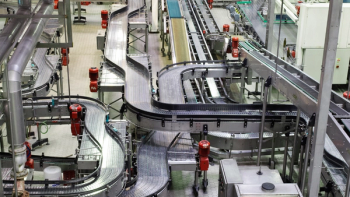
mAb Biosimilars: The Future of Cancer Treatment?
Time will determine the shape of biosimilar usage in oncology, but they will play a significant role in the battle against cancer in the future, writes Alessandra Franceschetti.
The price of treating cancer
Despite significant new drug discoveries and treatment innovations over the past few decades, cancer is responsible for
The surging costs of cancer treatment are not a new concern. The past ten years have seen dramatic advances in treatments across a number of tumor types, and these innovations have come with matching price tags – many of which have hit the headlines. To put some figures to this, Peter Bach (of Memorial Sloan Kettering Cancer Center) reported in the
The quest for solutions
It would be remiss not to mention one noteworthy development in tackling the financial burden of cancer treatment: the capability for biomarker testing in a number of expensive cancer drugs. These ground-breaking tests offer physicians a predictor of treatment response and, as such, are designed to ensure that only those patients who are likely to respond well will be administered the drug. This turns the once-fabled concept of personalized medicine into today’s reality. As well as saving unnecessary costs, this approach also avoids subjecting patients to ineffective treatments and the associated burden.
The emergence of biosimilars
Such is the context at a time when the first ‘generics’ of biologic targeted therapies are beginning to receive FDA/EMA approval to treat certain types of cancer. Targeted therapies such as biologic monoclonal antibodies (mAbs) are designed to recognize features specific to cancer cells; they target the specific areas of the cell that allow it to grow faster and/or abnormally. This is unlike ‘traditional’ chemotherapy, which kills all cells that grow and divide quickly, causing the patient to experience serious side-effects.
Copies of these biologic targeted therapies are known not as generics but as ‘biosimilars’ – because it is impossible to replicate a biologic drug exactly. Manufacturing alone can modify its molecular structure. However, a biosimilar drug will have no clinically meaningful differences from the originator biological medicine in terms of quality, safety and efficacy.
Biosimilars themselves have been around for some time. Despite a slow initial uptake and ongoing debate over the concept of bio-similarity, the last few years have seen widespread use of biosimilars in autoimmune indications such as rheumatoid arthritis (RA) and ulcerative colitis. In particular, biosimilar versions of blockbuster drugs have captured a significant share of the market. For example, biosimilars of the compound infliximab are now used in a large number of cases where a biologic compound is initiated to treat IBD (1) . Similarly, in some regions, Benepali – a biosimilar of Enbrel/etanercept – is now used more frequently than the originator in new-initiation RA patients (2). Country guidelines, especially in cost-focused markets, have been facilitating the rapid uptake of biosimilars in immunology, and this impressive rise looks set to continue.
Moving back to oncology, February 2017 saw
Barriers to biosimilar uptake and similarities/differences across indications
Given this cost differential, we would expect to see the same impact of biosimilars in oncology that we’ve seen so far in immunology – but the impact of potential barriers might be quite different based on the indication of interest. There is big uncertainty around certain points, including:
1. The impossibility of direct replication: As mentioned, a ‘biosimilar’ is not an exact replica of a biologic drug. What’s more, most companies who produce biosimilars are based in emerging countries, where regulations may be less stringent than those imposed by the FDA or EMA. Will oncologists trust the companies behind their production and the manufacturing process?
2. A lack of evidence: If a biosimilar has been approved in another therapeutic category (i.e., the rituximab biosimilar in rheumatology), will physicians in a different field, e.g. oncologists, be convinced of the safety and efficacy of a drug which, on paper, seems equivalent to the branded version, but for which they don’t have sufficient data?
3. Patients’ preference for brands: In some countries, patients have a preference towards branded versions of a drug versus their generic counterparts. Will physicians ignore their patient’s wishes or will the patient’s preference influence the treatment decision?
What do the oncologists think?
To answer some of these questions, Ipsos turned to the source. In April 2017, we conducted a preliminary mini-survey among EU5 physicians on the complex and fascinating topic of biosimilars. This involved a total of 246 European Haematologists / Oncologists treating non-Hodgkin’s lymphoma (NHL) and chronic lymphocytic leukemia (CLL) patients – the main indications for which the rituximab biosimilar can be prescribed.
From this research, as shown in Figure 1, Ipsos was able to ascertain that physicians do indeed seem eager to prescribe biosimilars to treat cancer. Just 3 months after the approval of the first mAb biosimilar in oncology, almost a third stated that they are willing to use biosimilars for most or all their NHL/CLL patients.
Figure 1: Oncologists’ Perceptions of mAb Biosimilars
Conclusion
Many different factors will determine the shape of biosimilar usage in oncology. Will different specialists welcome the learnings of peers focused on a completely different medical area? Will usage occur in specific patient types, or will it be driven by physicians’ attitudes? Most importantly, will cancer patients have access to better healthcare? Only time will tell but, looking at our physician research together with the impossible financial equation facing the industry, we expect biosimilars to play a significant role in the battle against cancer moving forward.
Sources
1. Ipsos IBD Therapy Monitor, Q2 2017: 204 physicians reporting on 2007 IBD patients in EU5; data collected online.
2. Ipsos RA Therapy Monitor, Q2 2017: 255 physicians reporting on 1273 RA patients in EU5; data collected online)
Data are © Ipsos 2017.
About the author
Alessandra Franceschetti is Associate Director, Oncology Real World Evidence,
Newsletter
Lead with insight with the Pharmaceutical Executive newsletter, featuring strategic analysis, leadership trends, and market intelligence for biopharma decision-makers.




